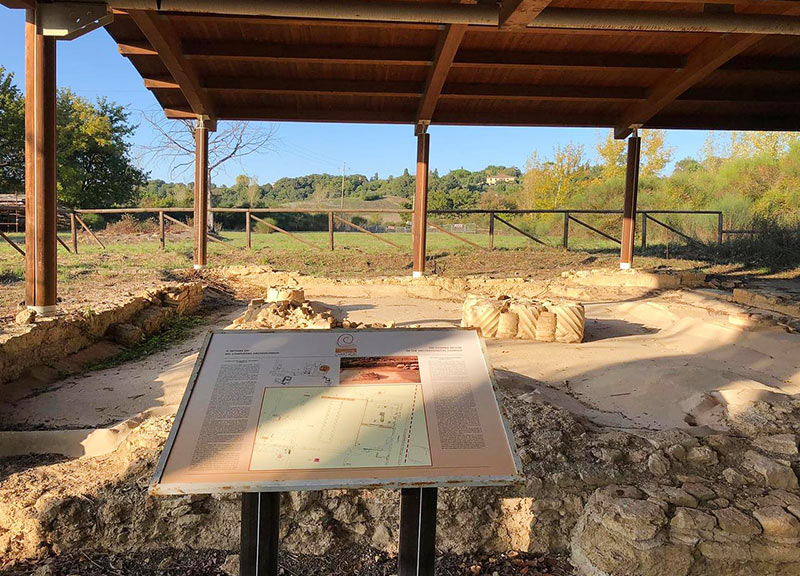SHARRYLAND








Archaeological Park of Campo Muri
Pages of history among sulfurous waters and white stones


Where is

What it is and where it is
The Campo Muri Archaeological Park brings together the three riches of the soil on which Rapolano stands: thermal water, travertine sediments, and Etruscan and Roman archaeological finds. All three, are closely related: the highly calcareous water deposited calcium carbonate in layers that over the centuries formed travertine, a stone used by the Etruscans to build their burial mounds (unicum in Etruria). Also the Etruscans, venerated the hot spring and offered small terracotta or bronze objects in the shape of a limb, or ear, ex-voto to pray to the warm "magic liquid" with healing powers.
Why it is special
After the Etruscans, it was the Romans who really took advantage of the wealth of the thermal waters and, on their part, built very large and diverse environments to create a place for relaxation, pleasure and, as always, business. With the fall of the Empire, things changed a lot: the thermal facilities became private dwellings, and little by little the inhabitants moved up the hill in a defensive entrenchment that gave rise to the present town of Rapolano. The amazing thing is that all this can be read between the stone pages of the great history book that is Campo Muri.
Not to be missed
The connection between the Archaeological Park and Rapolano is very deep, so the best experience is to start the visit from the historic center, touch the Romanesque parish church of San Vittore, which is located halfway between the two sites, and arrive at Campo Muri. In this way you walk in the footsteps of the inhabitants who over millennia have lived in this hamlet among the hills, in a world of sulfur water and white stones.
A bit of history
The history of Campo Muri begins with a travertine quarry that right here was and still is. In 1973 quarrymen began to find square stones, coins, small statues. Immediately some rapolanesi enthusiasts, scholars or simple amateurs, formed an Archaeological Group, alerted the Superintendence and took action to save as much as possible. Excavation campaigns began, and the real archaeological interest of the area was realized, but what had already been excavated was now lost. Nevertheless, it remains a very important testimony, one of the few accessible Roman spas in southern Tuscany.
Curiosity
It has not been easy for archaeologists to work at Campo Muri, and by the way they are quite expensive campaigns. How come? We are certainly not in extreme weather conditions, nor are we on an incline, but...there iswater! The thermal water continued to gush out even after the baths and houses were abandoned, depositing limestone, which then hardened and became stone... So there are the archaeological layers, and the geological ones, let's say, mixed together. A nice mille-feuille of history and nature!
 Part of the excavation
Part of the excavation
Enter the Map of Italy's Undiscovered Wonders and find treasures where you least expect it... Inspire, Recommend, Share...
Collections
The Map thanks:
In the Community
Enter the Map of Italy's Undiscovered Wonders and find treasures where you least expect it... Inspire, Recommend, Share...
Where is

Collections

